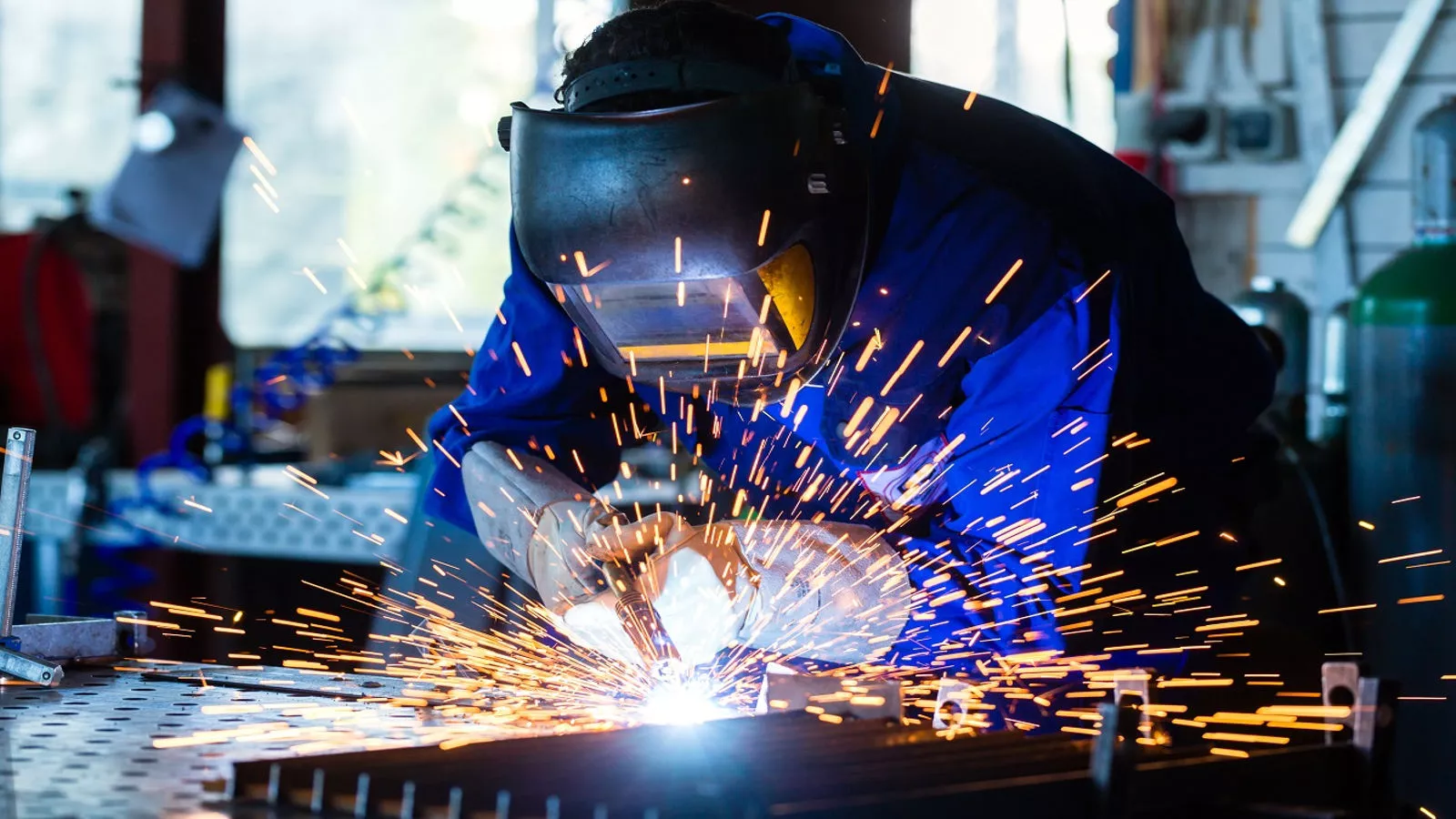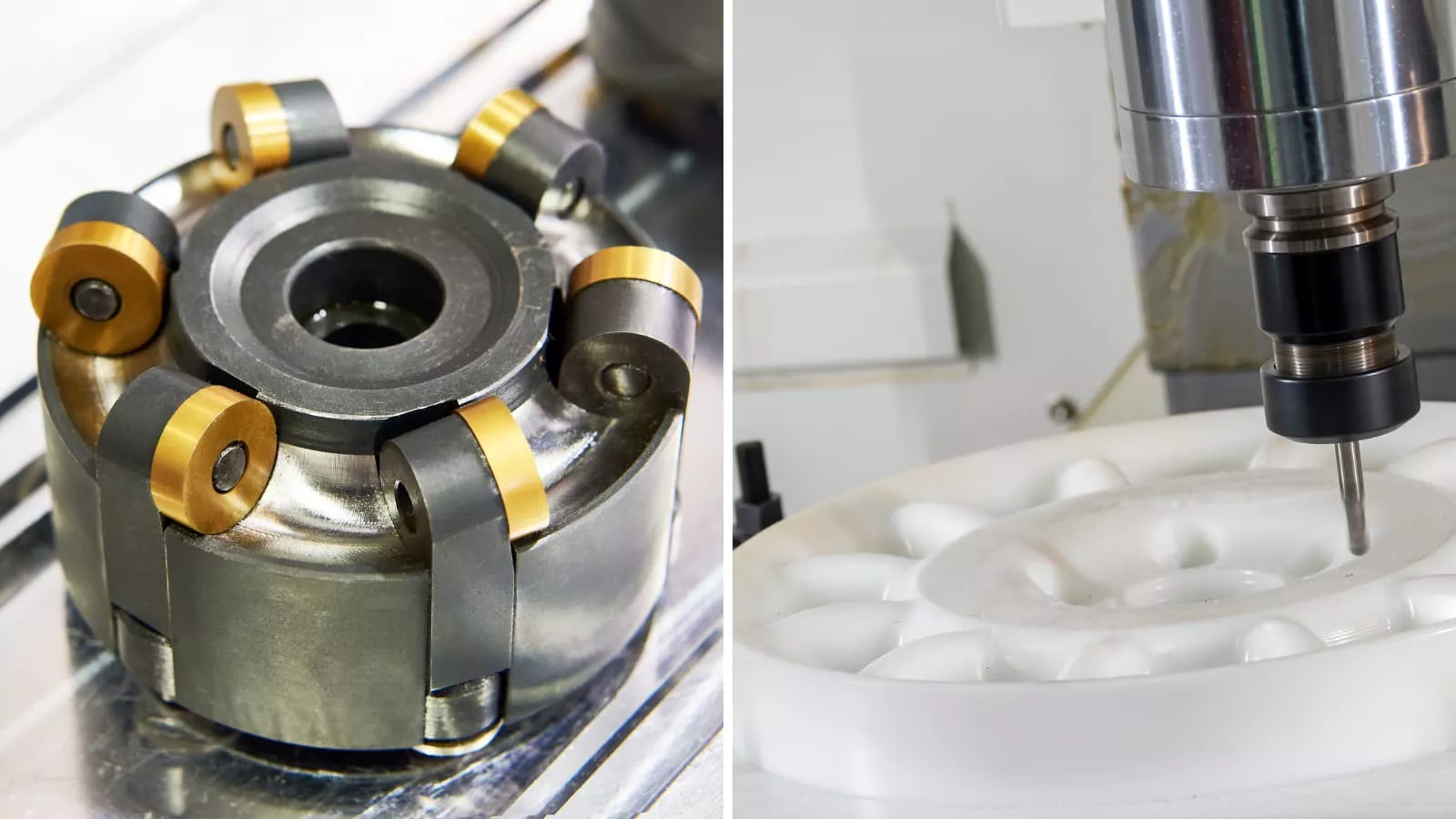Technology advancements have helped develop more productive machining methods, including simultaneous 5-axis machining and 3+2-axis machining. Some machinists and designers tend to confuse these processes, so we will look at simultaneous 3+2 axis vs. 5 axis machining.
For many years, traditional manufacturing used machines operating in three dimensions – the X-, Y-, and Z-axis. This type of rotational movement for machining components is still prevalent in manufacturing. However, the newer technologies add two more axes to the conventional three dimensions, giving machines five axes.
That said, it is essential to note that the 3+2 axis mechanism may not exactly equal 5-axis CNC machining. Does this sound illogical to you? This article will extensively examine the 3+2 vs. 5 axis machining comparison. You will also learn the advantages and disadvantages of each process so that you can choose the best option for your operations. Let’s get to it!
What Is Simultaneous 5-Axis CNC Machining?
The simultaneous 5-axis machining tool moves cutting tools simultaneously across five axes. Three linear axes and two rotational axes work simultaneously to create the desired components.

The axes are:
| Axis | Working Manner |
| X-axis | Moves from left to right |
| Y-axis | Moves from front to back |
| Z-axis | Moves from top to bottom |
| A-axis | Rotates around the X-axis (tilts backward and forward) |
| B-axis | Rotates around the Y-axis (tilts from left to right) |
The additional two axes (A and B) are known as the tilting table axis and the table rotational axis, respectively. As you have seen from the movement of the axes, 5-axis machining involves additional tilt to the tool spindle or worktable. Consequently, there is increased movement and rotation, improving the functionality of the conventional CNC machining processes.
The fourth and fifth axis ensures that machinists can fabricate up to 5 faces in one operation. As a result, the process is highly precise and efficient. In addition, it makes creating complex features and structures more efficient. The minimal setup makes the process highly suitable and cost-effective for various projects.
What Is 3+2 Axis CNC Machining?
Vertical and horizontal milling machines have helped reach the usual three machining axes. However, tilt-rotary trunnions and rotary tables have been added for easy movement on two additional rotary axes. This is essentially 3+2 axis machining.

The machining process is also called positional 5-axis machining because the 4th and 5th axes keep the part fixed in a specific orientation. The typical 3-axis machining operation can then be carried out as opposed to continual movement during the process. In addition, the 3+2 axis machining centers use shorter, more rigid cutting tools. Thus, you can be sure of greater dimensional stability.
The 3+2 machining setup adds extra advantages to the traditional 3-axis machine center. It enables the machining of workpieces from all sides. Therefore, it reduces the need for more setups during the manufacturing process. As a result, the cycle time and production cost will reduce.
3+2 vs. 5 Axis Machining: Comparing Their Advantages of Disadvantages
The major difference between 3+2 and 5-Axis CNC machining is their setup. The 5-axis machining center has a complete design allowing it to move cutting tools in five axes. On the other hand, the 3+2 axis machining uses the 3-axis CNC machine functionality together with tilt-rotary trunnions and rotary tables.

Another difference between 3+2 and simultaneous 5-axis CNC machining is the applicable products and industries. 3+2 machining works majorly for plane processing projects. On the other hand, 5-axis machining is more suited for complex contour surfaces. The capabilities of 5-axis machining allow it to fabricate various parts features and geometries suitable for different industries.
However, not all projects will require the full simultaneous 5-axis CNC machining. Sometimes, the 3+2 axis machining may be more efficient. To determine the best choice between 5-axis vs. 3+2 machining, you need to know their advantages and disadvantages.
Advantages of 5-Axis Machining
There are many benefits of using the 5-axis machining process, including the following:
High Precision and Accuracy
The minimal settings necessary for 5-axis machining lower the chances of error and enhance the functionalities for CNC precision machining to attain outstanding quality. The 5-axis machines on the market now avoid the need to adjust workpieces at various angles while cutting. As a result, you may expect better machining tolerances.
High Cutting Speed and Repeatability
Cutting tools are usually tangential to the cutting surfaces when 5-axis machining is used. This configuration enables the removal of additional materials as the tool spins. As a result, cycle times and total machining costs are reduced. Furthermore, certain machine setups permit the use of shorter cutting tools. This extends the tools’ lifespan and assures repeatability.
Ability to Fabricate Complex Components
The 5-axis machining center can machine five surfaces at the same time. In a single structure, it completes the machining of curved components and other parts with multiple faces. The extra rotation in this machining method allows for more complicated designs and geometries. The 5-axis milling technique may rotate pieces to reach required geometries in a single operation, avoiding the need for sophisticated fixtures.

Better Surface Finishes
This technique’s extra axes guarantee the appropriate alignment of workpieces. Thus, it brings them closer to the cutting tool. Consequently, you may create desired shapes using shorter cutting tools. These tools are capable of cutting at fast speeds with minimal vibration.
Less vibration reduces the likelihood of “chatter” markings on the end product. Some CNC machines also increase spindle usage when cutting inclined surfaces. This technology allows you to create superior surface finishes while reducing post-processing expenses and time.
Reduces Costs and Cycle Time
Because of the high-speed advantage of the method, 5-axis machined components are frequently produced in a single operation. The single setup required saves time and money. Furthermore, using shorter tooling with increased longevity removes the need for regular tool replacement, which saves machining costs and time.
Advantages of 3+2 Machining
The various advantages of 3+2 axis machining include the following:
Fabricates More Intricate Features
The 3+2 machining technique allows the use of even shorter and more rigid cutting tools. These tools allow the fabrication of steep walls, undercuts in cavities, and many other complex features. The cutters can also create specific angles with the cutting surfaces.
At the same time, the spindle head is able to extend lower and closer to the workpiece. Therefore, precision is also achievable with this technique while it increases tooling lifespan.
Less Programming Requirements
Unlike simultaneous 5-axis machining, 3+2 machining involves lesser spatial trajectory. Since the tool moving distance is shorter, the rotational motion is also lesser, enabling more accessible programming of free-form surface processing.

Reduced Costs and Cycle Times
The traditional 3-axis machining centers will require you to stop the spindle multiple times to be able to machine different surfaces. This can be hugely challenging if you need to machine five or more surfaces. The 3+2 CNC machining capabilities help eliminate this issue. With this technique, you can work on five different surfaces at a time.
Disadvantages of 5-Axis Machining
Although simultaneous 5-axis CNC machining is highly beneficial, it also has some disadvantages. Some of them include:
Higher Initial Costs
The price of a 5-axis CNC machine and its necessary software is considerably high. It is far greater than what is required for 3- or 4-axis machining centers. Similarly, the machine’s maintenance needs are more complex than those of traditional machine tools. This factor also directly impacts the machining costs of 5-axis machined components.
Unsuitable for Some Applications
In some circumstances, the 4-axis and 5-axis machining techniques cannot be used. Such situations include when the cutter is too short or when the handle is too broad. In these conditions, vibration cannot be prevented under tilted angles.
Complex Programming Requirements
The additional rotary axes and the spatial trajectory involved are abstract and somewhat complicated. As a result, achieving the requisite machining accuracy, precision, and surface quality demand more programming effort. The machining accuracy error is greater in 4-axis and 3-axis than with the 5-axis machining.
Disadvantages of 3+2 Axis Machining
The 3+2 machining technique is generally set at a constant angle to the tool spindle. Therefore, you may need to have many titled views to cover the surfaces of complex CNC components. This often causes an overlap of tool paths, increasing the machining time.
3+2 vs. 5-Axis Milling: Which Is Right for You?

When comparing 5-axis vs. 3+2 machining, you will notice that they perform essentially the same functions. They both have advantages to improving efficiency on any production line. However, the right choice of technique will depend on the specific applications of the desired end results. For instance, 3+2 machining works majorly for plane processing projects. On the other hand, 5-axis machining is more suited for complex contour surfaces.
Machine shops that currently use 3-axis machining can easily transition into complete 5-axis machining capabilities with the means of 3+2 machining. It offers many advanced capabilities of the full 5-axis machines without too much expense. Since the initial costs of 5-axis machines and programming requirements are high, it may be more advisable to employ 3+2 machining.
However, 5-axis machining tools offer increased efficiencies for creating parts with complex geometries and tight tolerance requirements. They tend to meet a wide variety of processing needs with increased productivity and profitability. Their ability to process five surfaces of a component in a single operation involves lesser preparation, better accuracy, and shorter lead times.
Get High Precision 5-Axis CNC Machined Parts
Understanding the differences between 5-axis vs. 3+2 machining is great. However, getting superior quality and high-precision components requires working with a reliable CNC machining company. RapidDirect offers you extensive machining capabilities with state-of-the-art facilities, including 3+2 axis machines and simultaneous 5-axis CNC machines to ensure high precision and accuracy of machined parts.
Our advanced technologies help simplify fabrication, improve precision, and ensure fast and cost-effective manufacturing. We boast highly skilled and experienced technicians who are knowledgeable enough to offer outstanding 5-axis CNC machining services. We will recommend the most suitable techniques for your CNC machining projects to ensure you get the best results.
Our technical support team follows your project throughout and solves your problems in time. Contact us now, and let’s talk about your project. You can also upload your design files on our online quotation platform for a comprehensive DFM analysis and instant quote.



